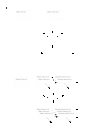The very same thing: Extending the object token concept to incorporate causal constraints on individual identity
- PMID: 22956989
- PMCID: PMC3434681
- DOI: 10.2478/v10053-008-0119-8
The very same thing: Extending the object token concept to incorporate causal constraints on individual identity
Abstract
The contributions of feature recognition, object categorization, and recollection of episodic memories to the re-identification of a perceived object as the very same thing encountered in a previous perceptual episode are well understood in terms of both cognitive-behavioral phenomenology and neurofunctional implementation. Human beings do not, however, rely solely on features and context to re-identify individuals; in the presence of featural change and similarly-featured distractors, people routinely employ causal constraints to establish object identities. Based on available cognitive and neurofunctional data, the standard object-token based model of individual re-identification is extended to incorporate the construction of unobserved and hence fictive causal histories (FCHs) of observed objects by the pre-motor action planning system. It is suggested that functional deficits in the construction of FCHs are associated with clinical outcomes in both autism spectrum disorders and later-stage stage Alzheimer's disease.
Keywords: Alzheimer’s disease; action planning; autism spectrum disorders; binding; episodic memory; medial temporal cortex; posterior parietal cortex.
Figures



Similar articles
-
Trajectory recognition as the basis for object individuation: a functional model of object file instantiation and object-token encoding.Front Psychol. 2011 Mar 25;2:49. doi: 10.3389/fpsyg.2011.00049. eCollection 2011. Front Psychol. 2011. PMID: 21716599 Free PMC article.
-
Remembering perceptual features unequally bound in object and episodic tokens: Neural mechanisms and their electrophysiological correlates.Neurosci Biobehav Rev. 2010 Jun;34(7):1066-79. doi: 10.1016/j.neubiorev.2010.01.014. Epub 2010 Feb 6. Neurosci Biobehav Rev. 2010. PMID: 20138910 Review.
-
Impaired assessment of cumulative lifetime familiarity for object concepts after left anterior temporal-lobe resection that includes perirhinal cortex but spares the hippocampus.Neuropsychologia. 2016 Sep;90:170-9. doi: 10.1016/j.neuropsychologia.2016.06.035. Epub 2016 Jul 1. Neuropsychologia. 2016. PMID: 27378441
-
Do autism spectrum disorders involve a generalized object categorization and identification dysfunction?Med Hypotheses. 2012 Sep;79(3):344-51. doi: 10.1016/j.mehy.2012.05.032. Epub 2012 Jun 14. Med Hypotheses. 2012. PMID: 22703905
-
Imaging cognition II: An empirical review of 275 PET and fMRI studies.J Cogn Neurosci. 2000 Jan;12(1):1-47. doi: 10.1162/08989290051137585. J Cogn Neurosci. 2000. PMID: 10769304 Review.
Cited by
-
Putting your money where your self is: Connecting dimensions of closeness and theories of personal identity.PLoS One. 2020 Feb 12;15(2):e0228271. doi: 10.1371/journal.pone.0228271. eCollection 2020. PLoS One. 2020. PMID: 32049999 Free PMC article.
-
Motion, identity and the bias toward agency.Front Hum Neurosci. 2014 Aug 21;8:597. doi: 10.3389/fnhum.2014.00597. eCollection 2014. Front Hum Neurosci. 2014. PMID: 25191245 Free PMC article.
-
Disrupted development and imbalanced function in the global neuronal workspace: a positive-feedback mechanism for the emergence of ASD in early infancy.Cogn Neurodyn. 2017 Feb;11(1):1-21. doi: 10.1007/s11571-016-9419-8. Epub 2016 Nov 15. Cogn Neurodyn. 2017. PMID: 28174609 Free PMC article. Review.
-
Editorial: How Humans Recognize Objects: Segmentation, Categorization and Individual Identification.Front Psychol. 2016 Mar 22;7:400. doi: 10.3389/fpsyg.2016.00400. eCollection 2016. Front Psychol. 2016. PMID: 27047426 Free PMC article. No abstract available.
-
Visual re-identification of individual objects: a core problem for organisms and AI.Cogn Process. 2016 Feb;17(1):1-13. doi: 10.1007/s10339-015-0736-3. Epub 2015 Oct 8. Cogn Process. 2016. PMID: 26449819 Review.
References
-
- Atran S., Norenzayan A. Religion’s evolutionary landscape: Counterintuition, commitment, compassion, com-munion. Behavioral and Brain Sciences. 2004;27:713–730. - PubMed
-
- Baars B. J. In the theater of consciousness: Global workspace theory, a rigorous scientific theory of consciousness. Journal of Consciousness Studies. 1997;4:292–309.
-
- Bar M. The proactive brain: Using analogies and associations to derive predictions. Trends in Cognitive Sciences. 2008;11:280–289. - PubMed
-
- Barsalou L. W. Grounded cognition. Annual Review of Psychology. 2008;59:617–645. - PubMed
LinkOut - more resources
Full Text Sources
